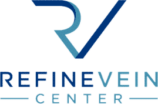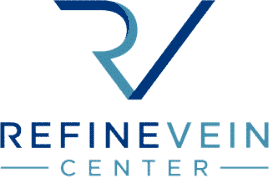Do you offer consultations before treatment?
Your consultation will be the first step to your treatment. When we meet with you the first time, we will go over your symptoms and perform a duplex ultrasound to get a full picture and thorough understanding of the state of your veins. Then, we’ll plan the next steps for your treatment including insurance coverage and any other information you need to feel comfortable and ready for treatment.
What is the difference between varicose veins and spider veins?
It is common to find varicose veins on the upper half of the leg as well as around the inside and back of the calves. Varicose veins are larger and can vary in color between blue, red, or flesh color. They may bulge from the skin and appear twisted.
Spider veins, on the other hand, are smaller and can appear on the surface of the skin in small spots or large areas. Their colors range from blue to red only, and they have an appearance like thin branches that go in many directions.
Are vein issues common?
Approximately 50-55% of American women and 40-45% of American men experience vein issues. Varicose veins affect 50% of Americans above the age of 50.
What causes varicose and spider veins?
One of the main causes of varicose veins are vein valves that have been damaged or weakened over time. Leg veins work hard to get your blood circulated back up to the heart against the pull of gravity, and sometimes they can get worn down. If a vein valve lets some blood out because of its weakness or damage, blood may collect in one specific area of the vein and eventually become a varicose vein.
Spider veins, although sometimes caused by blood back-up, are also the result of hormonal changes, injuries, and too much time in the sun.
What are varicose vein symptoms?
Besides being seen directly on the surface of the skin, varicose veins can be identified through other symptoms such as:
- Throbbing, cramping, or aching in the legs, especially after standing or sitting for long periods of time
- A feeling of heaviness in the legs
- Swelling
- An itchy, irritated rash
- Darkening of the skin
- Restlessness in the legs
What factors increase my risk of varicose veins and spider veins?
The chance of developing varicose and spider veins depends largely on the following factors:
- Aging. Vein valves may weaken over time, so as you age, you might find that varicose or spider veins begin to become more present in your life than they were before.
- Your medical history. Heredity plays a large role in the strength and health of your veins, so if you have family members who have experienced varicose or spider veins before, you may have a higher chance of experiencing them yourself.
- Hormonal changes. Some moments in our lives, like puberty, pregnancy, and menopause, cause significant hormonal effects that can cause varicose or spider veins. Hormonal treatments like taking birth control also affect our hormones, thus leading to potential risks of vein issues.
- Becoming pregnant. Oftentimes, veins enlarge during pregnancy because of the significant influx of blood in the body. The increased size of the uterus also affects and puts pressure on the body’s veins, thus leading to a greater potential for vein problems. After delivery, though, varicose veins normally improve after one trimester, or three months.
- Gaining weight. Significant or sudden weight gain can add excess pressure to veins, thus increasing the likelihood of varicose veins.
- Spending a lot of time standing or sitting. This causes leg veins to work harder to get blood to the heart, and when veins work harder and under more pressure than usual, they are more likely to develop venous issues.
- Too much time in the sun. Spider veins may appear on the nose or cheek after too much sun exposure.
Are varicose and spider veins dangerous?
Varicose and spider vein issues have different symptoms and effects on a person’s life, so it is important to consider them both individually.
Regarding spider veins, one does not normally have to worry about any health concerns other than itching, burning, or other unfavorable sensations in their legs. Spider veins may be a sign of a more complex and serious issue such as blood backup, but it is rare and comes with its own set of symptoms.
Varicose veins, on the other hand, may or may not come with severe symptoms. If symptoms do happen in your case, you might experience noticeable discomfort like throbbing and aching. Varicose veins do raise more concern for potential health problems that could develop if the varicose veins are left untreated, and these issues range from:
- Sores and/or skin ulcers due to blood backup over a long period of time that take more time to heal.
- Excess bleeding from wounds made to skin that has been weakened and thinned by varicose veins.
- Superficial thrombophlebitis: a blood clot, just below the skin's surface in an affected vein. There may be pain, swelling, warmth, and redness associated with this vein with superficial thrombophlebitis.
- Deep vein thrombosis: a blood clot in a vein that is deeper within the leg’s tissue that may cause a pulling feeling in the lower extremities as well as pain, swelling, warmth, and redness. This is a serious condition that could cause death should the blood clot make its way to the heart.
Are varicose veins hereditary?
80% of varicose vein cases are caused by heredity. Other reasons for varicose veins are standing/sitting for long periods of time, injury to the legs, weight gain, hormone therapy, and pregnancy.
Do men get varicose veins?
Both men and women can suffer from varicose veins, and both can undergo successful treatment.
Do I need to have varicose veins treated?
Talk to your doctor if you experience any of the following symptoms:
- You have a vein that has become red, swollen, warm, and/or painful.
- You have sores or a rash on your lower extremities, especially around the ankle.
- The skin on your lower extremities becomes thick and/or discolored.
- A varicose vein starts bleeding.
- You cannot continue with daily activities because of your vein issues.
- You do not like the appearance of the veins.
Once you feel pain in your legs because of vein issues, speak to your doctor immediately. The best way to heal vein issues is to treat them early.
What are spider veins?
Spider veins are dark-colored clusters of veins that are visible from the surface of the skin and may be accompanied by skin redness, pain, and/or swelling.
What causes spider veins?
Heredity, weight gain, pregnancy, and standing/sitting for long periods of time can be the cause of spider and varicose veins.
Are all the veins I see on my legs, spider veins?
Not necessarily. Visible veins on the legs can be spider veins, but they can also be varicose veins or larger reticular veins. The ultrasound you may receive before vein treatment will inform us of which venous problem you are experiencing.
Why do spider veins seem to creep up in the winter?
No, but when summer tans fade, pre-existing spider veins can and do become more obvious. Once winter is over and people start wearing shorts, there is usually a heightened awareness of the veins, making it seem as though more appeared throughout the winter.
Why do varicose veins and spider veins usually appear in the legs?
Because of gravity and the force of body weight, it can become challenging for your body to circulate blood back up to the heart from the legs. There can be significant pressure on leg veins, especially for one-way valve veins, thus causing most varicose and spider veins to occur in the lower extremities.
How are varicose veins diagnosed?
A varicose vein diagnosis comes after a few different evaluations. First, Dr. Reynolds will evaluate your symptoms and provide a physical exam. Then, he may run tests, including a duplex ultrasound, in order to understand the complexity of the vein issues. The ultrasound is the most efficient way to check the condition of your veins and will give us the clearest picture on how best to move forward.
Do I need to get an ultrasound exam?
You have full control when it comes to making medical decisions for your specific case, but we at Refine Vein Center highly recommend having a duplex ultrasound done for several reasons. First, the duplex ultrasound is the only non-invasive way to clearly and thoroughly check the condition of your veins. Second, because of the insight the ultrasound gives us, we are able to make faster and more accurate diagnoses. Once we have your diagnosis, we will be able to assign you with a treatment plan that is best for your situation, thus getting you on your way to improved health and pain-free living much quicker than without the ultrasound.
Can the treatment be done during pregnancy? Or how soon after if not during?
Treatment cannot be done during pregnancy. If you are pregnant, we recommend planning your treatment at least two months after giving birth.
Will insurance cover my treatments?
Typically, insurance companies will help cover a large percentage of vein treatment costs if the treatment is deemed as “medically necessary.” You can prove that your treatment is medically necessary by providing a documented history of venous insufficiency and its accompanying symptoms. Your insurance company will decide the specific coverage allowed, and we at Refine Vein Center will do all that we can do to provide the necessary documents that show diagnosis as well as procedure codes that your insurance company may need.
How can I prevent varicose and spider veins?
Unfortunately, it is not possible to prevent all varicose or spider veins. However, the following suggestions can help varicose and spider veins you already have plus prevent new ones from forming:
- Wear sunscreen to protect your face.
- Increase leg and vein strength as well as circulation by completing regular exercise like walking or running.
- Balance your weight and try not to apply too much pressure on your lower extremities.
- Avoid crossing your legs for long periods of time while sitting.
- Strive to elevate your legs while resting.
- Shift your weight between legs if standing for long periods of time, and stand up and walk around every half hour while sitting for long periods of time.
- Utilize elastic support stockings and try not to use tight clothing that constricts your waist, groin, or legs.
- Choose lower-heeled shoes over high-heeled shoes when possible.
- Eat plenty of foods that are high in fiber and low in salt like fresh fruits and vegetables and whole grains.
Can varicose and spider veins return after treatment?
Although modern treatments keep varicose and spider veins under control for several years, more abnormal veins can still develop over time. Unfortunately, weak or damaged vein valves cannot be cured, but they can be managed by getting regular ultrasounds and keeping a watchful eye on venous insufficiency. If necessary, ongoing treatment will keep any additional vein issues under control.
Contact our office at (615) 716-8346 to begin your journey to healthier, pain free legs.



